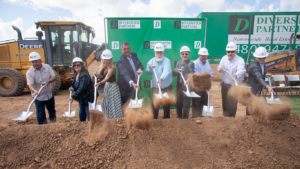Colliers International released the following information in its 4Q multifamily report. See below for highlights:
§ Vacancy in Greater Phoenix ended 2013 at 7.3 percent, down from 8.3 percent at the end of 2012. Vacancy has declined in each of the past four calendar years.
§ The decline in vacancy is particularly encouraging since it occurred despite a surge in the delivery of new units. With absorption outpacing completions, vacancy should continue to trend lower in 2014.
§ Average asking rents ended the year at $787, a 1.5 percent increase from year-end 2012. Tight vacancy conditions and a strengthening local economy should support more significant rent gains in 2014.
§ Multifamily sales velocity slowed somewhat in the fourth quarter, but activity in the second half of the year outpaced levels in the first half. There was an uptick in the number of properties that changed hands priced at more than $25 million during the fourth quarter.
§ Improving fundamentals and a favorable outlook drive prices higher in 2013. The median price reached $63,300 per unit in 2013, up 13 percent from 2012 and 40 percent higher than the 2011 median price.
THE BROADER VIEW
The Greater Phoenix multifamily market closed 2013 on a positive note, with vacancy ending the year at its lowest point since mid-2006, rent increases gaining momentum and sales prices pushing higher. The strong performance in 2013 is supporting a robust outlook for 2014. In recent years, improvement in the multifamily market was supported by a very low level of inventory growth, but developers ramped up deliveries in 2013, with more than 3,300 units coming online. Despite the delivery of new units, vacancy continued to trend lower due to a surge in net absorption. It is this spike in demand that will fuel property performance in 2014.
CURRENT CONDITIONS
The Greater Phoenix multifamily vacancy rate ended the in Greater Phoenix at 7.3 percent, down from 7.4 percent in the third quarter and a full percentage point lower than at the end of 2012. While there have been a few quarters where the rate has ticked higher, the overwhelming trend shows local vacancy on the decline. After peaking at 13.4 percent at the end of 2009, the rate has improved in each of the past four calendar years.
The vacancy improvement in the Greater Phoenix multifamily market has been widespread. More than 80 percent of the submarkets in the Valley have recorded year-over-year vacancy improvements and nearly 60 percent of the submarkets in Greater Phoenix have a vacancy rate at 7 percent or lower. As a comparison, fewer than 35 percent of the Valley’s submarkets had vacancy rates at or below 7 percent at this point a year ago. These trends hold at the high-end of the vacancy spectrum as well. Only three submarkets in Greater Phoenix have vacancy rates above 10 percent; at the same point in 2012, there were nearly three times as many submarkets with vacancies in the double digits.
Asking rents have steadily pushed higher across the Valley, ending the year at $787 per month or $0.93 per square foot. This represents a yearover- year increase of 1.5 percent, following a modest 0.4 percent increase in 2012. Looking ahead, additional vacancy declines should support further acceleration in the pace of rent growth. At the market level, asking rents should increase by approximately 3 percent, but high-demand areas and submarkets that are recovering rapidly could record rent gains of 5 percent or more.
Sales of multifamily properties dipped 15 percent from the third quarter to the fourth quarter, but activity in the second half of the year outpaced velocity in the !rst half by approximately 20 percent. While the total number of transactions lagged the third-quarter pace, there was an acceleration among higher-dollar transactions.
Nearly half of the properties that changed hands in the fourth quarter traded above $25 million; during the third quarter, transactions over $25 million accounted for 32 percent of all activity.
Improving property fundamentals, a favorable outlook and a surge at the high-end of the market drove prices higher in 2013. The median price reached $63,300 per unit for the year, 13 percent higher than the 2012 median. Pricing has made significant gains in the past two years, with the 2013 median price 40 percent higher than the 2011 median. Cap rates averaged 6 percent during the past 12 months, down from the mid-6 percent range in 2011 and 2012. With interest rates likely to rise, cap rates may not compress much further, but price growth could be driven by rising rents and tightening vacancy.



